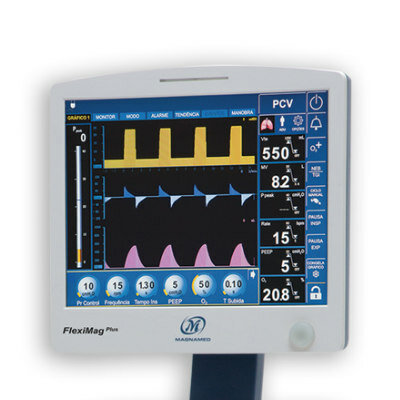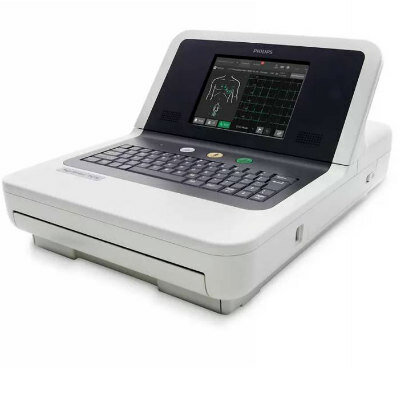AI Algorithm Combined With Blood Test Quickly and Accurately Diagnoses Heart Attacks in Women
|
By HospiMedica International staff writers Posted on 05 Sep 2022 |

Previous research has shown that women in the UK who have a heart attack receive poorer care than men at every stage. Women were 50% more likely to receive a wrong initial diagnosis, highlighting the need for innovations to help close the heart attack gender gap. Measuring the protein troponin in the blood is the current gold standard for diagnosing a heart attack. However, the levels of troponin released by the heart vary between men and women, with age and other health conditions. Current guidelines use the same threshold for all patients, meaning current tests are not as accurate as they could be. Now, an algorithm developed using artificial intelligence (AI) could help doctors to diagnose heart attacks in women more accurately and quicker than ever before.
Researchers at the University of Edinburgh (Edinburgh, Scotland) combined data from 10,038 people (48% women) who went to hospital with a suspected heart attack to develop an AI-based tool to help clinicians diagnose heart attacks more accurately. They then validated it on a further 3,035 people (31% women) outside of the UK. The tool, called CoDE-ACS, uses AI to combine routinely collected patient information when they arrive at hospital (including sex, age, observations, ECG findings and medical history) with the results from the troponin blood test. This then produces a score of 0 to 100.
The team found that CoDE-ACS was able to rule out a heart attack with 99.5% accuracy, confirming they were safe to go home. It also identified those who would benefit from staying in hospital for further tests, in whom the final diagnosis was a heart attack, with an accuracy of 83.7%. This compares to an accuracy of just 49.4% with current tests. Fewer than half of those identified for further testing using current approaches had a diagnosis of heart attack. The performance of the tool was consistent regardless of sex, age and pre-existing health conditions. Current tests mean that some patients’ troponin levels do not fit into the ‘rule in’ or ‘rule out’ thresholds, making clinical decisions more challenging. However, with a second troponin measurement, CoDE-ACS was able refine risk in the 29.5% of people who did not fit the simple ‘rule in’ or ‘rule out’ criteria allowing accurate determination if further action was needed.
“This is a huge step forward which promises to ensure everyone is on a level playing field when it comes to heart attack diagnosis and treatment,” said Professor James Leiper, our Associate Medical Director. “We know that women are more likely to receive a misdiagnosis, but by harnessing the power of AI, this team could provide one solution that helps to make that an issue of the past.”
“We’ve now embedded our algorithm into an easy-to-use mobile app to support doctors in guiding treatment decisions,” said Dimitrios Doudesis, data scientist at the BHF Centre for Cardiovascular Science, University of Edinburgh. “Whilst the troponin test takes 30 minutes to process, we take an array of other health information and add it into the app alongside the troponin measurement. This provides doctors with a precise and instantaneous score to confirm if they can reassure their patient that they haven’t had a heart attack and send them home, or if they require further tests.”
Related Links:
University of Edinburgh
Latest AI News
- AI-Powered Algorithm to Revolutionize Detection of Atrial Fibrillation
- AI Diagnostic Tool Accurately Detects Valvular Disorders Often Missed by Doctors
- New Model Predicts 10 Year Breast Cancer Risk
- AI Tool Accurately Predicts Cancer Three Years Prior to Diagnosis
- Ground-Breaking Tool Predicts 10-Year Risk of Esophageal Cancer
- AI Tool Analyzes Capsule Endoscopy Videos for Accurately Predicting Patient Outcomes for Crohn’s Disease
Channels
Critical Care
view channel
Deep-Learning Model Predicts Arrhythmia 30 Minutes before Onset
Atrial fibrillation, the most common type of cardiac arrhythmia worldwide, affected approximately 59 million people in 2019. Characterized by an irregular and often rapid heart rate, atrial fibrillation... Read more
Breakthrough Technology Combines Detection and Treatment of Nerve-Related Disorders in Single Procedure
The peripheral nervous system (PNS) serves as the communication network that links the brain and spinal cord to every other part of the body. It consists of two parts: the somatic nervous system, which... Read moreSurgical Techniques
view channel
Hydrogel-Based Miniaturized Electric Generators to Power Biomedical Devices
The development of engineered devices that can harvest and convert the mechanical motion of the human body into electricity is essential for powering bioelectronic devices. This mechanoelectrical energy... Read moreWearable Technology Monitors and Analyzes Surgeons' Posture during Long Surgical Procedures
The physical strain associated with the static postures maintained by neurosurgeons during long operations can lead to fatigue and musculoskeletal problems. An objective assessment of surgical ergonomics... Read more.jpg)
Custom 3D-Printed Orthopedic Implants Transform Joint Replacement Surgery
The evolving field of 3D printing is revolutionizing orthopedics, especially for individuals requiring joint replacement surgeries where traditional implants fail to provide a solution. Although most people... Read more
Cutting-Edge Imaging Platform Detects Residual Breast Cancer Missed During Lumpectomy Surgery
Breast cancer is becoming increasingly common, with statistics indicating that 1 in 8 women will develop the disease in their lifetime. Lumpectomy remains the predominant surgical intervention for treating... Read morePatient Care
view channel
Surgical Capacity Optimization Solution Helps Hospitals Boost OR Utilization
An innovative solution has the capability to transform surgical capacity utilization by targeting the root cause of surgical block time inefficiencies. Fujitsu Limited’s (Tokyo, Japan) Surgical Capacity... Read more
Game-Changing Innovation in Surgical Instrument Sterilization Significantly Improves OR Throughput
A groundbreaking innovation enables hospitals to significantly improve instrument processing time and throughput in operating rooms (ORs) and sterile processing departments. Turbett Surgical, Inc.... Read more
Next Gen ICU Bed to Help Address Complex Critical Care Needs
As the critical care environment becomes increasingly demanding and complex due to evolving hospital needs, there is a pressing requirement for innovations that can facilitate patient recovery.... Read moreGroundbreaking AI-Powered UV-C Disinfection Technology Redefines Infection Control Landscape
Healthcare-associated infection (HCAI) is a widespread complication in healthcare management, posing a significant health risk due to its potential to increase patient morbidity and mortality, prolong... Read moreHealth IT
view channel
Machine Learning Model Improves Mortality Risk Prediction for Cardiac Surgery Patients
Machine learning algorithms have been deployed to create predictive models in various medical fields, with some demonstrating improved outcomes compared to their standard-of-care counterparts.... Read more
Strategic Collaboration to Develop and Integrate Generative AI into Healthcare
Top industry experts have underscored the immediate requirement for healthcare systems and hospitals to respond to severe cost and margin pressures. Close to half of U.S. hospitals ended 2022 in the red... Read more
AI-Enabled Operating Rooms Solution Helps Hospitals Maximize Utilization and Unlock Capacity
For healthcare organizations, optimizing operating room (OR) utilization during prime time hours is a complex challenge. Surgeons and clinics face difficulties in finding available slots for booking cases,... Read more
AI Predicts Pancreatic Cancer Three Years before Diagnosis from Patients’ Medical Records
Screening for common cancers like breast, cervix, and prostate cancer relies on relatively simple and highly effective techniques, such as mammograms, Pap smears, and blood tests. These methods have revolutionized... Read morePoint of Care
view channel
Critical Bleeding Management System to Help Hospitals Further Standardize Viscoelastic Testing
Surgical procedures are often accompanied by significant blood loss and the subsequent high likelihood of the need for allogeneic blood transfusions. These transfusions, while critical, are linked to various... Read more
Point of Care HIV Test Enables Early Infection Diagnosis for Infants
Early diagnosis and initiation of treatment are crucial for the survival of infants infected with HIV (human immunodeficiency virus). Without treatment, approximately 50% of infants who acquire HIV during... Read more
Whole Blood Rapid Test Aids Assessment of Concussion at Patient's Bedside
In the United States annually, approximately five million individuals seek emergency department care for traumatic brain injuries (TBIs), yet over half of those suspecting a concussion may never get it checked.... Read more
New Generation Glucose Hospital Meter System Ensures Accurate, Interference-Free and Safe Use
A new generation glucose hospital meter system now comes with several features that make hospital glucose testing easier and more secure while continuing to offer accuracy, freedom from interference, and... Read moreBusiness
view channel
Johnson & Johnson Acquires Cardiovascular Medical Device Company Shockwave Medical
Johnson & Johnson (New Brunswick, N.J., USA) and Shockwave Medical (Santa Clara, CA, USA) have entered into a definitive agreement under which Johnson & Johnson will acquire all of Shockwave’s... Read more














